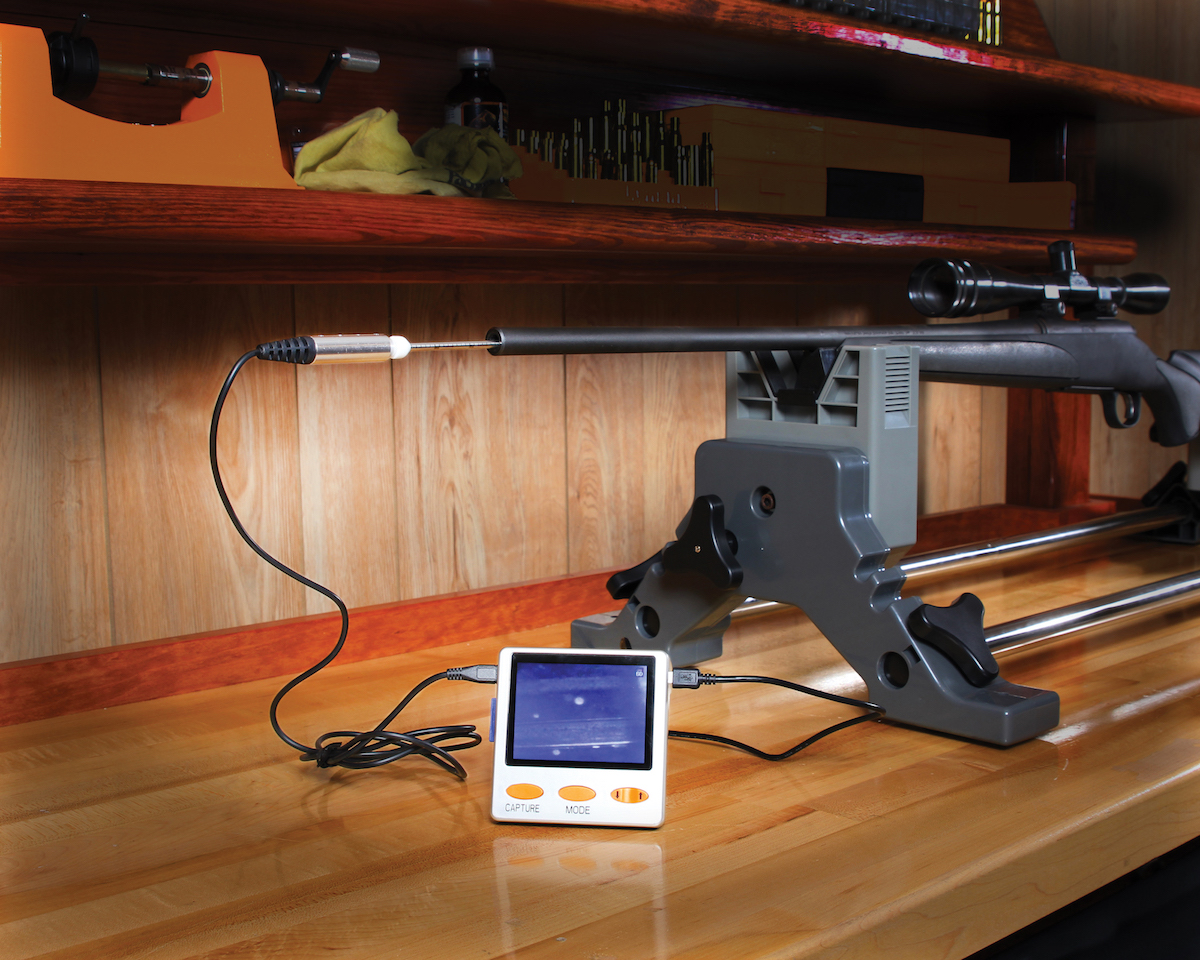Often, guys will swear they’ve cleaned their rifle — but despite their best efforts, the gun continues to shoot poorly. This can be the result of a guy making a few passes with a patch, then maybe that’s followed with a brush. There — nice and clean. Except that’s probably not clean enough. It can take a lot of elbow grease and the right solvent to remove the lead or copper in a badly fouled rifle.
As gunsmith Bryce Towsley wrote in a piece for Range365.com, “I once spent a week cleaning a badly fouled .17 Remington rifle. I didn’t know it was physically possible for that much copper to be trapped in so small a bore. Another time I had a .338 Winchester that was fouled so badly that it looked like a smoothbore.”
Fouling buildup over time can affect a gun’s reliability. Dirty bores cause malfunctions and wreak havoc on velocity and gun accuracy. But these problems can be solved by cleaning a gun properly with a solvent that matches the type of fouling or bore damage that exists within a gun owner’s barrel. You can also improve your gun-cleaning efforts further by using a borescope to pinpoint the type of damage you're dealing with and its exact location, which improves the chances of truly cleaning the gun.
Here’s what to look for when cleaning your gun bore:
- Lead and copper fouling
- Tool marks and machining marks
- Pitting, rusting and fire cracking
- General wear of the barrel and throat chamber area

The use of a borescope like Lyman’s Borecam allows shooters to be proactive and more effective when cleaning their guns, potentially avoiding buildup where fouling is more likely to occur. This borescope retails for right around $300. Photo: Lyman
If you're shooting a factory rifle, the barrel will likely have tool marks or machining marks. These are left behind by the drilling and reaming process. In most cases, this is a non-issue. But the marks can make the barrel rough. The rough areas lead to bits of jacket deposited throughout the bore.
While these deposits will likely happen simply from gun use and regardless of tool marks, using a borescope to identify these marks and other rough areas can be a preventative measure. It allows shooters to be proactive and more effective when cleaning their guns, potentially avoiding buildup where fouling is more likely to occur. If the fouling hangs around and shots fired accumulate over time, eventually the rifle’s accuracy will be affected.
Firecracking, the powder that builds up in the throat chamber, can reignite under high heat, making it something similar to a pulsing red horseshoe in a bed of hot coals. This combination of power accumulating and heat can speed up throat erosion and compromise a rifle.
Each of these, along with rusting, pitting and other signs of bore wear and tear, are imperfections that can affect gun accuracy.
BONUS: Gun Cleaning Basics
If you'd like to get tips for cleaning a rifle and see recommendations for cleaning solvents, here are 8 steps to guide you through the basics.
Featured photo: Lyman






